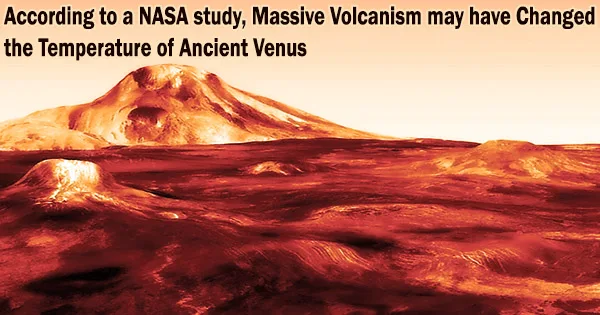According to a NASA research, long-lasting volcanic activity that released enormous volumes of material over the course of hundreds to thousands of millennia may have contributed to Venus’ transformation from a temperate, moist world to the acidic hothouse it is today.
This “large igneous provinces” in Earth’s past that led to multiple major extinctions on our own planet millions of years ago are also discussed in the research.
“By understanding the record of large igneous provinces on Earth and Venus, we can determine if these events may have caused Venus’ present condition,” said Dr. Michael J. Way, of NASA’s Goddard Institute for Space Studies in New York. Way is lead author on the paper, published April 22 in The Planetary Science Journal.
Massive-scale volcanism that lasted for tens of thousands or possibly hundreds of thousands of years produced large igneous provinces. More than 100,000 cubic miles of volcanic rock can be deposited by them on the surface. This amount of molten rock could, at its maximum, bury the entire state of Texas a half-mile beneath the surface.
Currently, Venus has an atmosphere with a surface pressure 90 times greater than that of Earth and typical surface temperatures of roughly 864 F. The study suggests that these extreme volcanic eruptions may have caused these conditions at some point in Venus’ distant past.
A primary goal of DAVINCI is to narrow down the history of water on Venus and when it may have disappeared, providing more insight into how Venus’ climate has changed over time.
Dr. Michael J. Way
In instance, a runaway greenhouse effect that sparked the planet’s shift from wet and temperate to hot and dry could have been caused by a number of such eruptions occurring within a short period of geologic time (within a million years).
“Large fields of solidified volcanic rock cover 80% of Venus’ surface in total,” Way said. “While we’re not yet sure how often the events which created these fields occurred, we should be able to narrow it down by studying Earth’s own history.”
Since the beginning of multicellular life approximately 540 million years ago, there have been at least five significant mass extinction events that have each wiped out more than 50% of the animal life on Earth.
The majority of these extinction events, according to this study and those that came before it, were brought on by or made worse by the kinds of eruptions that result in massive igneous provinces.
For reasons that Way and other researchers are still investigating, the climate changes brought on by these events did not have the same impact on Earth’s climate as they did on Venus.
NASA’s next missions to Venus, scheduled for launch in the late 2020s the Deep Atmosphere Venus Investigation of Noble gases, Chemistry, and Imaging (DAVINCI) mission and the Venus Emissivity, Radio science, InSAR, Topography, And Spectroscopy (VERITAS) mission aim to study the origin, history, and present state of Venus in unprecedented detail.
“A primary goal of DAVINCI is to narrow down the history of water on Venus and when it may have disappeared, providing more insight into how Venus’ climate has changed over time,” Way said.
The DAVINCI mission will come before VERITAS, an orbiter created to study Venus’ surface and interior from a great distance in order to comprehend its volcanic and volatile past and, consequently, Venus’ path to its present state.
Scientists may be able to pinpoint exactly how Venus changed from being humid and moderate to dry and hot thanks to the data from both missions. We might learn more from it about how volcanism has impacted life on Earth in the past and how it might do so in the future.
















